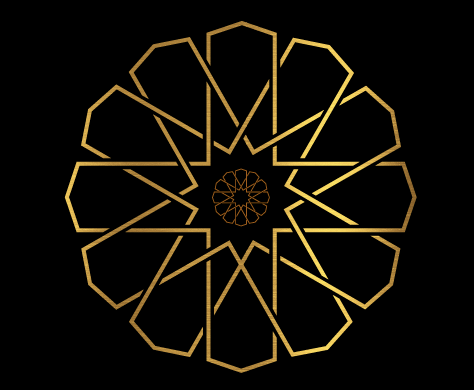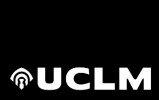Modelling tissue mechanics and cell fate in regeneration and cancer (II)

Organizers: Gabriel Piedrafita & Qiyao (Alice) Peng & José Manuel García Aznar
17:00 – 17:20 – Mathematical modelling of tissue morphogenesis and regeneration / Presenting author: Diane Peurichard
17:20 – 17:40 – Modelling the influence of loss of E-Catherin and stroma attachment in cancer cell invasion: Mathematical approach / Presenting author: Pilar Guerrero
17:40 – 18:00 – Cancer progression and monotonic accumulation models: Evolutionary assumptions, casual interpretations, and extensions / Presenting author: Fred Vermolen.
18:00 – 18:20 – Emergence and consequences of transcription factor dynamics during development / Presenting author: Jochen Kursawe.
Cancer Modelling

15:00 – 15:20 –Higher-Dimensional (HD) partial differential equation (PDE) approaches for acute myeloid leukaemia (AML) / Presenting author: Arran Hodgkinson.
15:20 – 15:40 – Exploring cancer processes through the boolean networks framework / Presenting author: Gregorio Rubio-Navarro
15:40 – 16:00 – Pantograph type partial differential equations and tumor growth / Presenting author: Ali Ashher Zaidi.
16:00 – 16:20 – New conserved quantities and modern symmetry analysis applied to a dissipative Westervelt equation / Presenting author: Tamara María Garrido Letrán
Modelling tissue mechanics and cell fate in regeneration and cancer (I)

Organizers: Gabriel Piedrafita & Qiyao (Alice) Peng & José Manuel García Aznar /
10:40 – 11:00 – Modelling a proliferative disorder of the bone: Fibrous Dysplasia / Presenting author: Magdalena Caballero.
11:00 – 11:20 – Efficient cell-based modelling in Julia with applications to development and cancer / Presenting author: Gabriel Torregrosa Cortés.
11:20 – 11:40 – Hybrid cellular potts modelling of angiogenesis: Cell-extracellular matrix interactions and cell-fate decisions / Presenting author: Roeland Merks.
11:40 – 12:00 – A simple predictive cell-fate model of epithelial clone dynamics/ Presenting author: Gabriel Piedrafita.
Protein/enzyme kinetics

17:20 – 17:40 – Enzyme kinetics simulation at the scale of individual particles / Presenting author: Taylor Kearney.
17:40 – 18:00 – Optimising resource allocation to defence chemicals and counter-counter defence by enzyme inhibitors in parasitic and trophic interactions / Presenting author: Stefan Schuster.
18:00 – 18:20 – Information across scales: Can information on protein structure inform models of protein network dynamics? / Presenting author: Holly Huber.
Imaging

17:20 – 17:40 – Measuring the similarity between single-molecule localisation microscopy datasets: A data-driven machine-learning approach / Presenting author: Sandeep Shirgill.
17:40 – 18:00 – Optimizing the method of images for regularized Stokeslets for sphere motions near boundaries / Presenting author: Hoa Nguyen.
18:00 – 18:20 – Quantifying cytoskeletal dynamics and remodeling from live-imaging microscopy data / Presenting author: Carey Lee.
Digital twins for clinical oncology and cancer research

Organizers: Guillermo Lorenzo & Chengyue Wu
15:00 – 15:20 – Predictive modelling in radiation oncology / Presenting author: Heiko Enderling.
15:20 – 15:40 – Therapy optimization in gliomas: in vitro and in silico study of alternative dose spacings / Presenting author: Juan Jiménez-Sánchez.
15:40 – 16:00 – Integrative kinetics and machine learning modeling for prediction of outcomem following immunotherapy in lung cancer / Presenting author: Sèbastien Benzekry
16:00 – 16:20 – Digital twins in leukemia treatment / Presenting author: Ana Niño-López
Tumor control and therapies

15:00 – 15:20 – Optimal control of tumour growth to maximaze patient life expectancy / Presenting author: Byron Tzamarias.
15:20 – 15:40 – Modeling and cotrol of tumor growth: alternative approaches / Presenting author: Pasquale Palumbo.
15:40 – 16:00 – Optimal therapy for lung and brain cancers using intra- and intercelullar networks / Presenting author: Tamaki Wakamoto.
16:00 – 16:20 – Mathematical insights into cylic multidrug therapy: how temporally heterogeneous treatments can control phenotypically heterogeneous tumour / Presenting author: Artur César Fassoni.
Ecology and Metabolic Networks (I)

15:00 – 15:20 – Multistationarity for n-site mixed phosporylation network / Presenting author: Maya Mincheva.
15:20 – 15:40 – Optimal and model predictive of gene regulatory networks: Driving a positively autoregulated gene to bi-modal behaviour / Presenting author: Hamza Faquir.
15:40 – 16:00 – How centrality measures can reduce complexity of elementary conversion modes opportunities connecting network science and metabolic models / Presenting author: Zita Soons.
16:00 – 16:20 – Tractability challenges for biochemical network models / Presenting author: Chathranee Jayathilaka.
Topological data analysis for applications in biomedicine

Organizers: Salvador Chulián García & Bernadette Jana Stolz-Pretzer.
10:40 – 11:00 – Modelling periodic biological processes as persistent cohomology classes / Presenting author: Kelly Maggs.
11:00 – 11:20 – Capturing spatial patterns with topological methods / Presenting author: Ondrej Draganov.
11:20 – 11:40 – Specific TDA pipelines for understanding spatial biology of multiplex data / Presenting author: A. Natarajan, M. J. Jiménez.
11:40 – 12:00 – Relational persistent homology for multispecies data with application to the tumor microenvironment / Presenting author: Jagdeep Dhesi.
Immunology

10:40 – 11:00 – An interpretable prediction method for antibody binding affinity based on mathematical models of structural fluctuations and deep learning/ Presenting author: Barbara Bravi
11:00 – 11:20 – Mathematical dermatology linking eruption morphology and skin disease / Presenting author: Sungrim Seirin-Lee.
11:20 – 11:40 – Hydrodynamic limits for modelling anomalous immune response: a focus on Multiple Sclerosis / Presenting author: Romina Travaglini.
11:40 – 12:00 – Modelling IL-2 signalling dynamics for a single T cell / Presenting author: Siting Miao.



